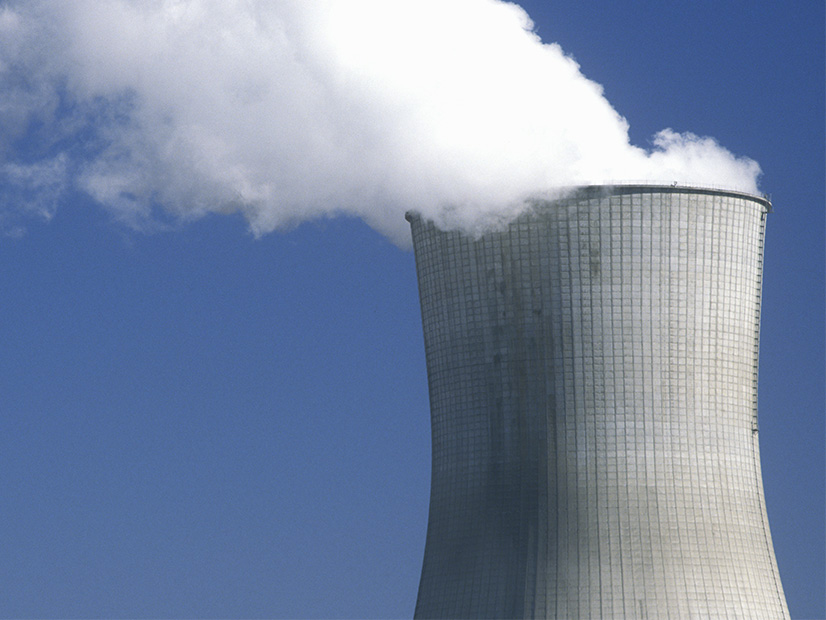The net-zero energy system of the future may rely on many integrated, hybridized resources to reach even the hardest-to-decarbonize sectors, and hydrogen is a rising star in that scenario.
It could help grow long-duration energy storage needed for a renewables-heavy grid, or it can be a lifeline for nuclear power or natural gas.
“If we want to reduce emissions at an affordable cost, while also maintaining grid reliability and resilience, we need to use all the resources that we have, which means coordinating the use of nuclear, renewables and fossils with carbon capture to meet growing energy demands,” Shannon Bragg-Sitton, Integrated Energy Systems lead at the Idaho National Laboratory, said on Wednesday.
At the National Lab, nuclear power is seen as a decarbonization enabler, even though it is struggling in today’s market.
“Nuclear energy currently provides more than half of our non-emitting electricity, but unfortunately, it’s being pushed out of the market in many regions due to a glut of renewable energy … and historically low-cost natural gas,” Bragg-Sitton said at the Electric Power Research Institute’s Electrification 2021 forum.
But an energy market that has a demand for hydrogen could give the existing U.S. nuclear fleet more to do.
“The primary output from a nuclear plant is heat, and we believe that we should be leveraging that heat more effectively,” Bragg-Sitton said. “Rather than reducing reactor power when we have low net electricity demand, we can redirect that heat and electricity to energy storage for later use.”
To that end, she said, the U.S. Department of Energy is supporting demonstration projects that will produce hydrogen on site at nuclear facilities starting this year.
Mitsubishi Power Americas is betting on hydrogen being a go-to long-duration energy storage option for accommodating high amounts of planned renewable generation.
“You can envision a world where we’re probably going to have curtailment of renewable generation on some days, and we might run short to meet peak demand on others,” Todd Brezler, vice president of marketing at Mitsubishi Power Americas, said. “We think long-duration storage — typically in the form of green hydrogen — is a good solution in terms of having technologies available that we really know how to use.”
The company also is looking at blue hydrogen produced with natural gas and is investing heavily in geologic storage for green hydrogen through its proposed Advanced Clean Energy Storage project in Utah and other potential hydrogen hubs around the U.S.
Hydrogen also could have a role to play in putting existing infrastructure to work in a post-natural gas world, according to Mike Rutowski, senior vice president of research and technology development at Gas Technology Institute (GTI).
The institute has a vision for a “carbon-managed future” that integrates the electric and natural gas systems and leverages hydrogen, carbon-neutral fuels or biofuels to repurpose the existing gas infrastructure.
In that vision, the existing gas system is a long-duration energy storage asset that can be decarbonized, Rutowski said. Hydrogen is produced with clean electricity and stored in the existing gas system to be accessed when needed to make energy.
“To do that, we need continued R&D planning and investment decisions and to think about the whole energy system and the broad menu of technology pathways that we can use to meet all of the energy uses economy wide in a decarbonized way,” he said.
Incentivizing Hydrogen
Building out a hydrogen market to reach net-zero by 2050 is going to take incentives and market signals akin to what made renewables competitive today.
Production tax credits and renewable portfolio standards, for example, would go a long way to make hydrogen stand up against low-cost natural gas, according to Rutowski.
Green hydrogen currently costs about $6/kilogram, which is about $45/MMBtu, he said. If the cost drops to an anticipated $1/kilogram with technological advancements, it is still going to be $7/MMBTU. That will not compete against abundant gas at $2/MMBtu.
“That is still a significant cost gap that’s going to require the combination of incentives, market demand and investor pressure as well as companies taking the first move to build the infrastructure and be the first movers,” he said.
It is also important to put a social value on green hydrogen and support first movers in the market, Bragg-Sitton said. Public-private investments are an important way to help scale up technologies and hit a $1/kilogram price within the decade.
Government also can provide an incentive for end use in manufacturing to build demand.
“[We can] incentivize production to grow the market for that clean hydrogen so that we can introduce clean technologies all the way down the line, from the generation of energy to utilization and moving that energy downstream to the product level,” Bragg-Sitton said.
Energy market signals are another measure that will encourage development of long-duration energy storage with green hydrogen, according to Brezler. Mitsubishi, he said, is encouraged that some markets, such as California, are beginning to look at how to compare the per-kilogram cost of hydrogen to other energy storage fuels. (See Panel Examines Future for Green Hydrogen in West.)
The U.S. Department of Energy’s Loan Programs Office offers an important mechanism for the hydrogen market to grow, Brezler added. The LPO invited Mitsubishi in May to apply for up to $595 million to develop the proposed Advanced Clean Energy Storage project.
“Those types of loans help you get over that chicken-and-egg problem, where you’re able to start investing in the infrastructure and get going on green hydrogen,” he said.



